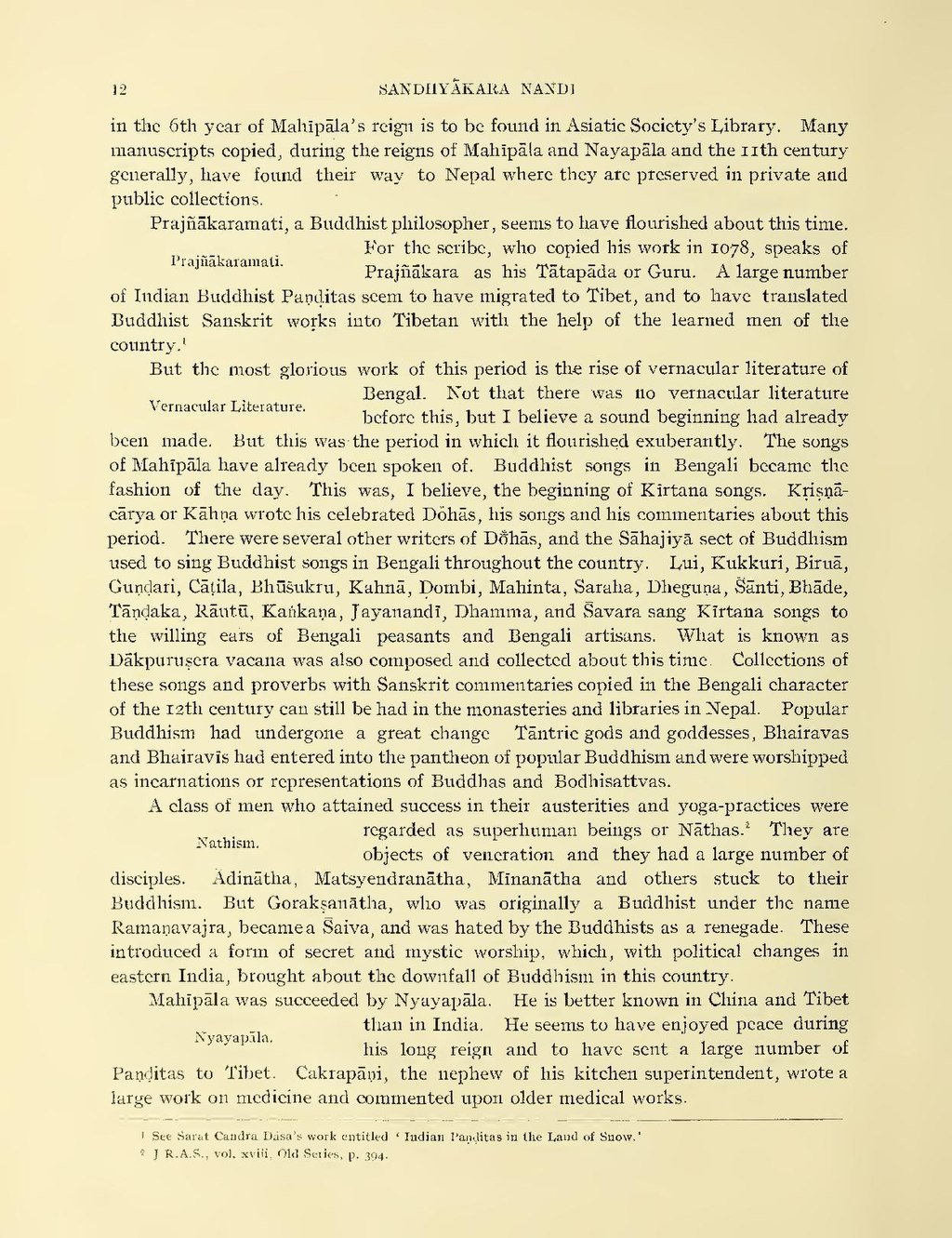SANDHYAKARA NANDI
12
in the 6th year of
Mahipala’s reign
is
to be
found
in Asiatic Society’s Library.
Many
manuscripts copied, during the reigns of Mahipala and Nayapala and the nth century generally, have found their way to Nepal where they are preserved in private and public collections.
Prajnakaramati, a Buddhist philosopher, seems to have flourished about this time.
For the
Prajiiakara of
who
copied his work in 1078, speaks of A large number as his Tatapada or Guru.
scribe,
Prajnakaramati.
Indian Buddhist Panditas seem to have migrated to Tibet, and to have translated
Buddhist Sanskrit works into Tibetan with the help of the learned country.
men
of the
1
But the most glorious work
of this period
is
the rise of vernacular literature of
Not that there was no vernacular literature before this, but I believe a sound beginning had already been made. But this was the period in which it flourished exuberantly. The songs of Mahipala have already been spoken of. Buddhist songs in Bengali became the Bengal.
Vernacular literature.
fashion of the day.
Kahna wrote
This was,
I
believe, the beginning of
Kirtana songs.
Krisna-
Dohas, his songs and his commentaries about this There were several other writers of Dohas, and the Sahajiya sect of Buddhism period. used to sing Buddhist songs in Bengali throughout the country. Lui, Kukkuri, Birua, carya or
his celebrated
Gundari, Catila, Bhusukru, Kahna, Dombi, Mahinta, Saraha, Dheguna, Santi, Bhade,
Tandaka, Rautu, Kankana, Jayanandi, the willing ears of
Bengali
Dhamma, and Savara
sang Kirtana songs to
peasants and Bengali artisans.
What
is
known
as
Dakpurusera vacana was also composed and collected about this time Collections of these songs and proverbs with Sanskrit commentaries copied in the Bengali character Popular of the 12th century can still be had in the monasteries and libraries in Nepal. Buddhism had undergone a great change Tantric gods and goddesses, Bhairavas and Bhairavis had entered into the pantheon of popular Buddhism and were worshipped as incarnations or representations of Buddhas and Bodhisattvas. A class of men who attained success in their austerities and yoga-practices were regarded as superhuman beings or Nathasd They are Nathism. objects of veneration and they had a large number of Adinatha, Matsyendranatha, Minanatha and others stuck to their disciples. Buddhism. But Goraksanatha, who was originally a Buddhist under the name Ramanavajra, became a Saiva, and was hated by the Buddhists as a renegade. These introduced a form of secret and mystic worship, which, with political changes in eastern India, brought about the downfall of
Buddhism
in this country.
Mahipala was succeeded by Nyayapala. He is better known in China and Tibet than in India. He seems to have enjoyed peace during his long reign and to have sent a large number of Panditas to Tibet.
work on medicine and commented upon older medical works.
large 1
2
Cakrapani, the nephew of his kitchen superintendent, wrote a
See Sarat Candra Dasa’s work entitled J
R.A.S., vol. xviii, Old Series,
p. 394.
‘
Indian Panditas
in
the
Laud
of
Snow.’

